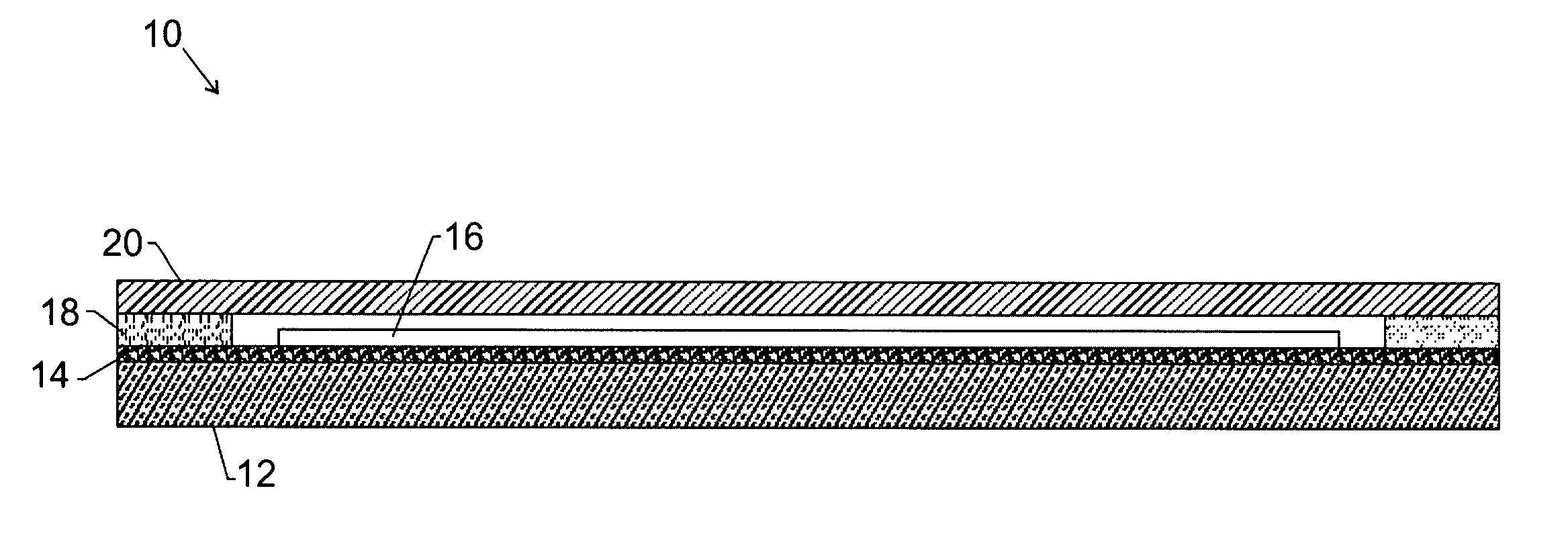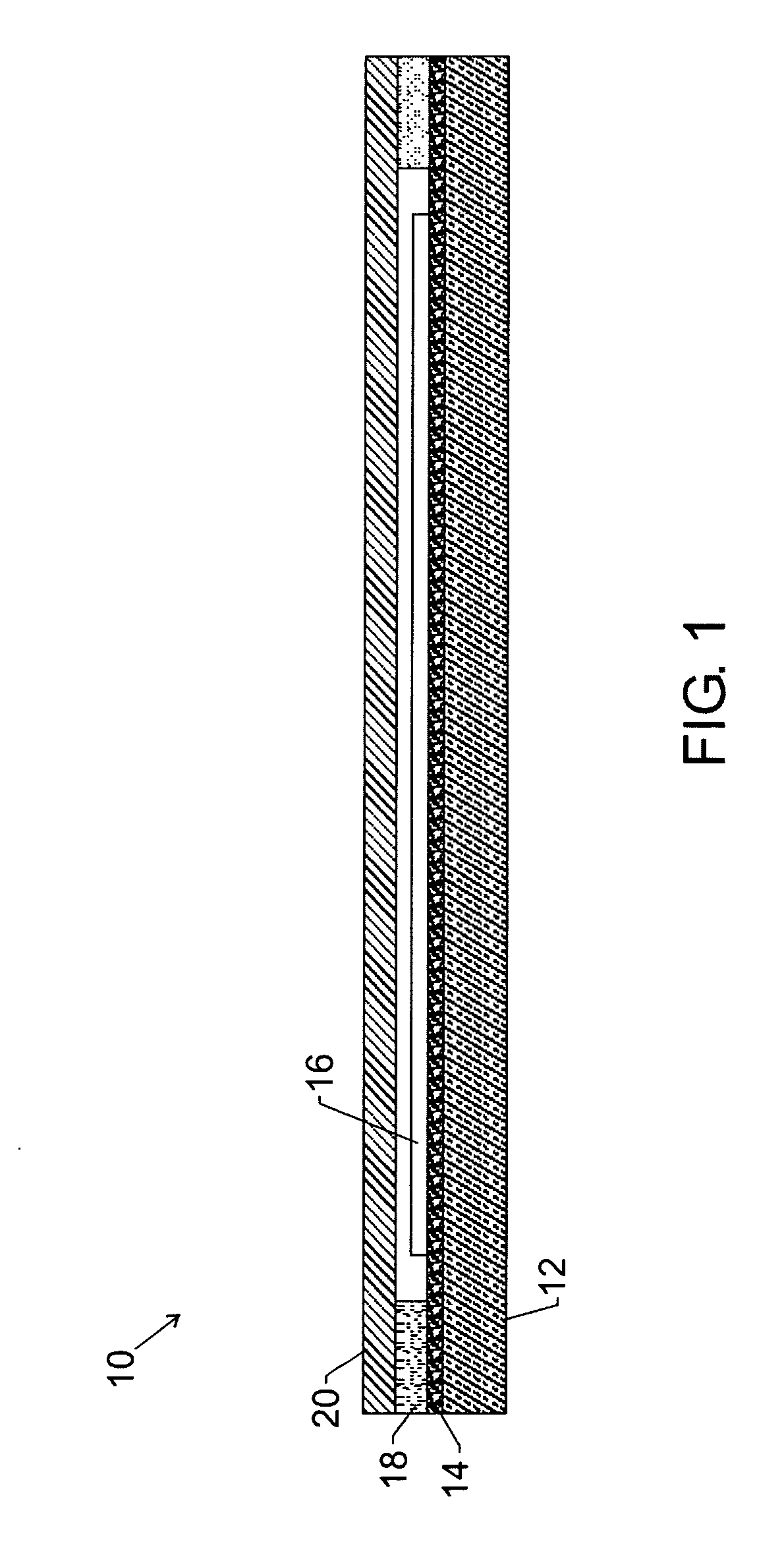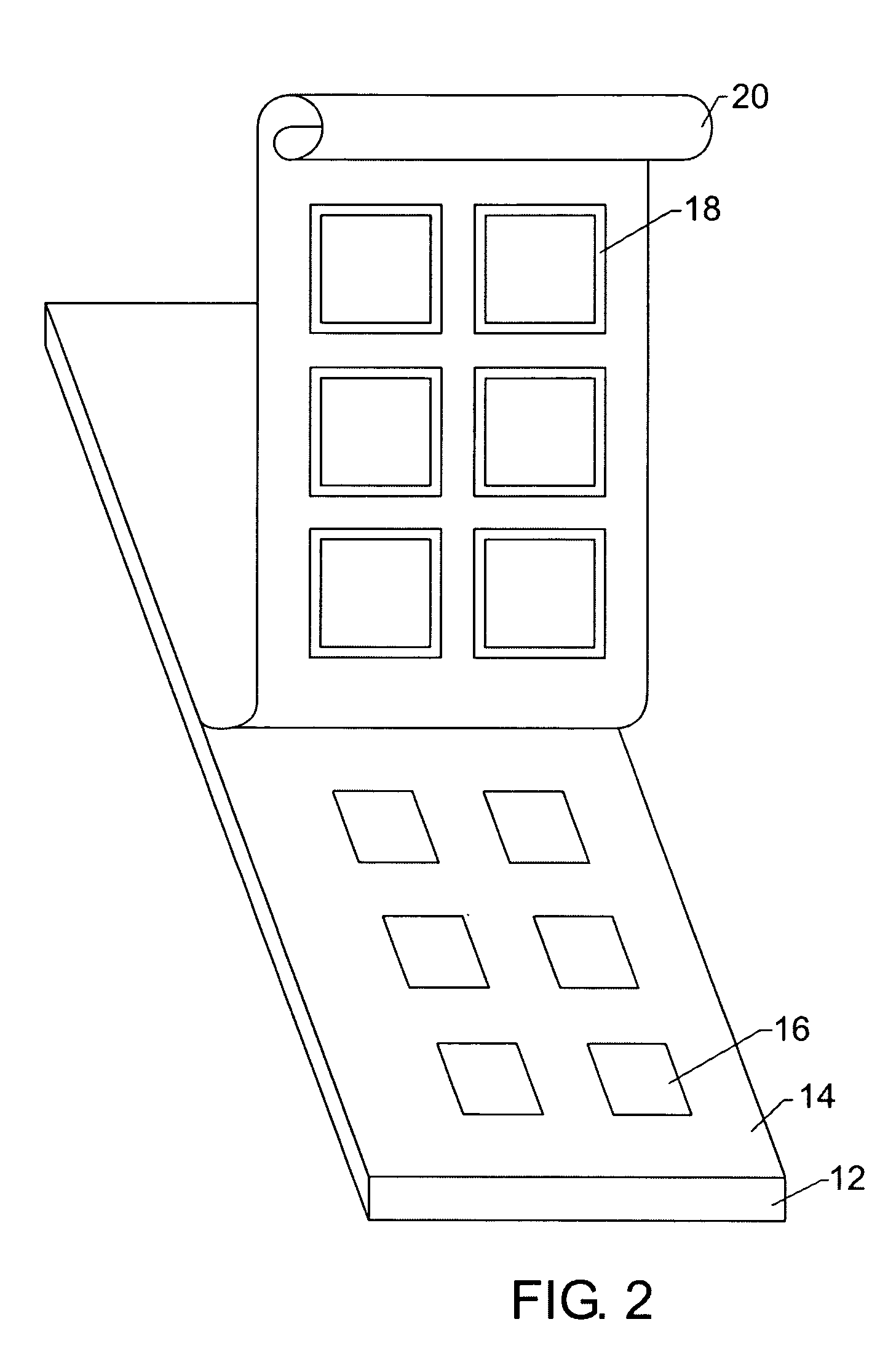Organic electronic packages having hermetically sealed edges and methods of manufacturing such packages
a technology of organic electronic packages and edges, applied in the direction of sustainable manufacturing/processing, final product manufacturing, semiconductor/solid-state device details, etc., can solve the problems of affecting the reliability of electrical contacts with organic thin films, and affecting the quality of organic thin films
- Summary
- Abstract
- Description
- Claims
- Application Information
AI Technical Summary
Problems solved by technology
Method used
Image
Examples
Embodiment Construction
[0018]FIG. 1 illustrates an organic package having a flexible substrate 12. The flexible substrate 12 generally comprises a substantially transparent film. As used herein, “substantially transparent” refers to a material allowing a total transmission of at least about 50%, preferably at least about 80%, of visible light (i.e., having a wave length in the range from about 400 nm to about 700 nm). The flexible substrate 12 is generally thin, having a thickness in the range of approximately 0.25-50.0 mils, and preferably in the range of approximately 0.5-10.0 mils. The term “flexible” generally means being capable of being bent into a shape having a radius of curvature of less than approximately 100 cm.
[0019] The flexible substrate 12 may be dispensed from a roll, for example. Advantageously, implementing a roll of transparent film for the flexible substrate 12 enables the use of high-volume, low cost, reel-to-reel processing and fabrication of the organic package 10. The roll of tran...
PUM
 Login to View More
Login to View More Abstract
Description
Claims
Application Information
 Login to View More
Login to View More - R&D
- Intellectual Property
- Life Sciences
- Materials
- Tech Scout
- Unparalleled Data Quality
- Higher Quality Content
- 60% Fewer Hallucinations
Browse by: Latest US Patents, China's latest patents, Technical Efficacy Thesaurus, Application Domain, Technology Topic, Popular Technical Reports.
© 2025 PatSnap. All rights reserved.Legal|Privacy policy|Modern Slavery Act Transparency Statement|Sitemap|About US| Contact US: help@patsnap.com



